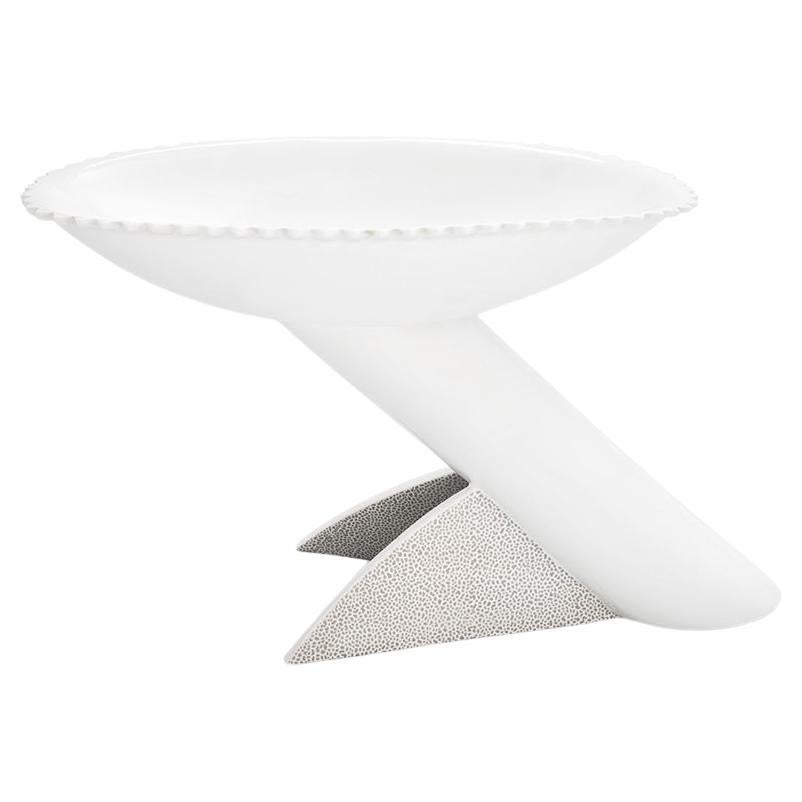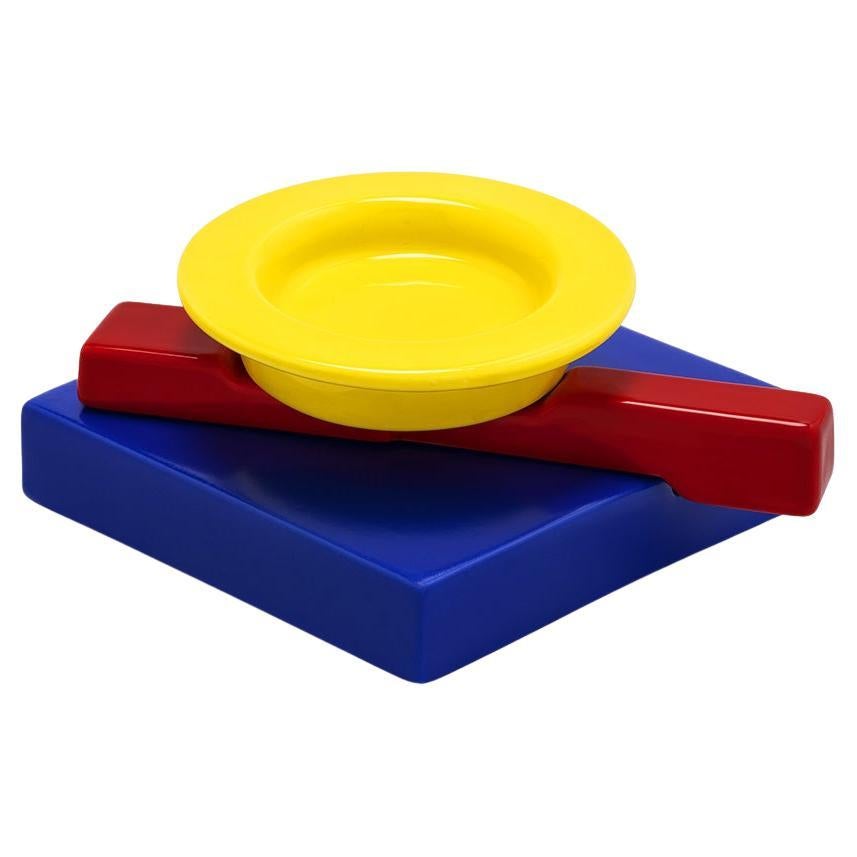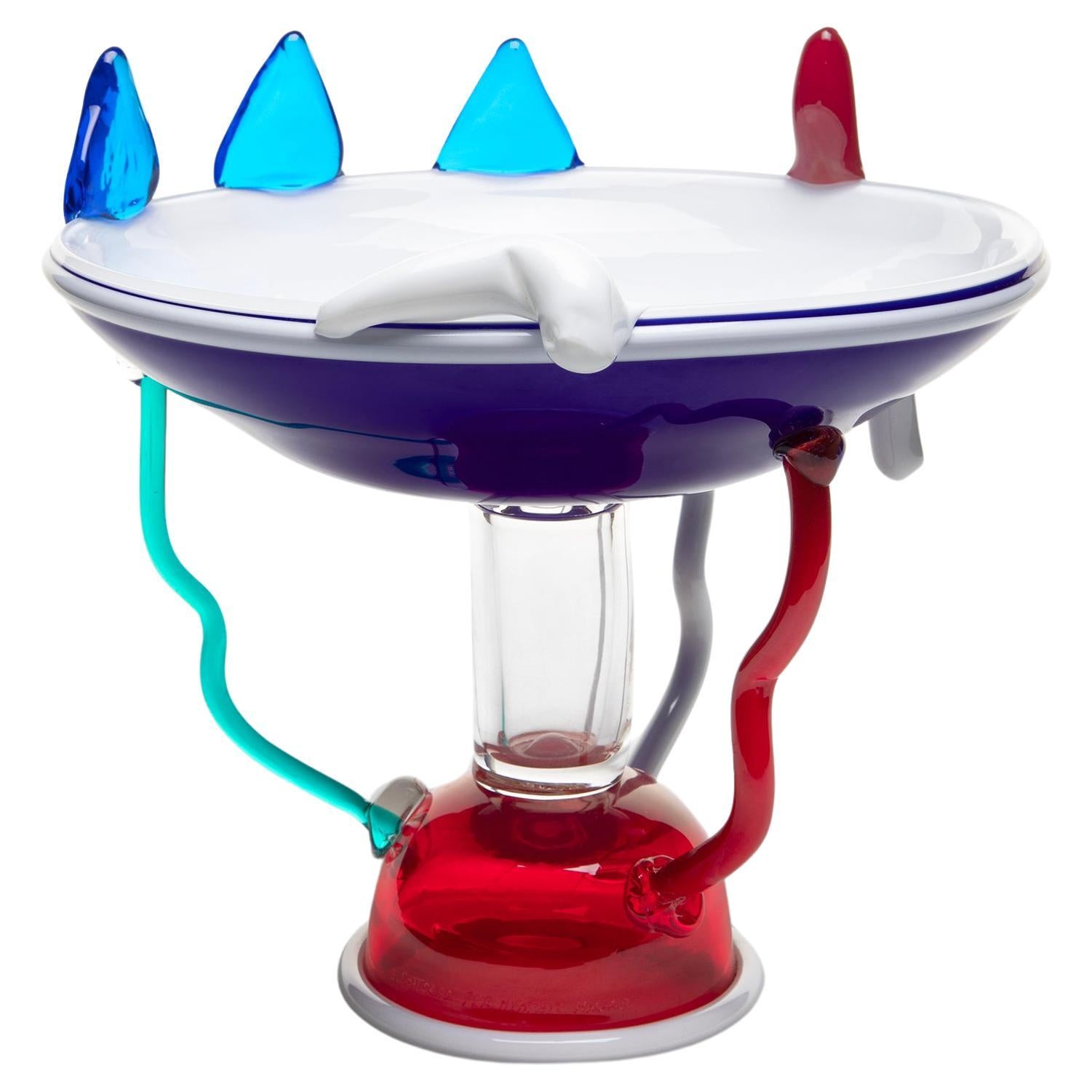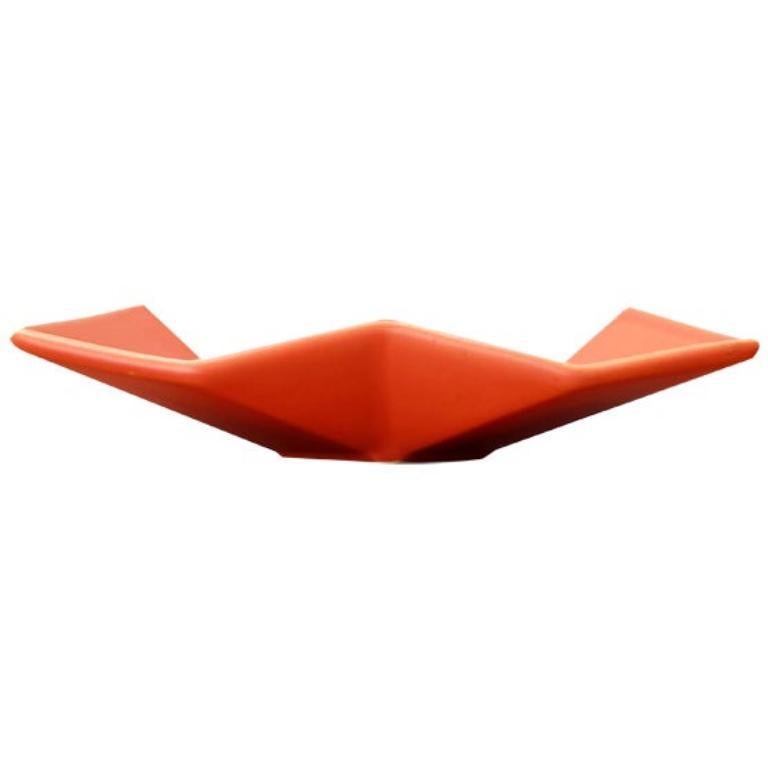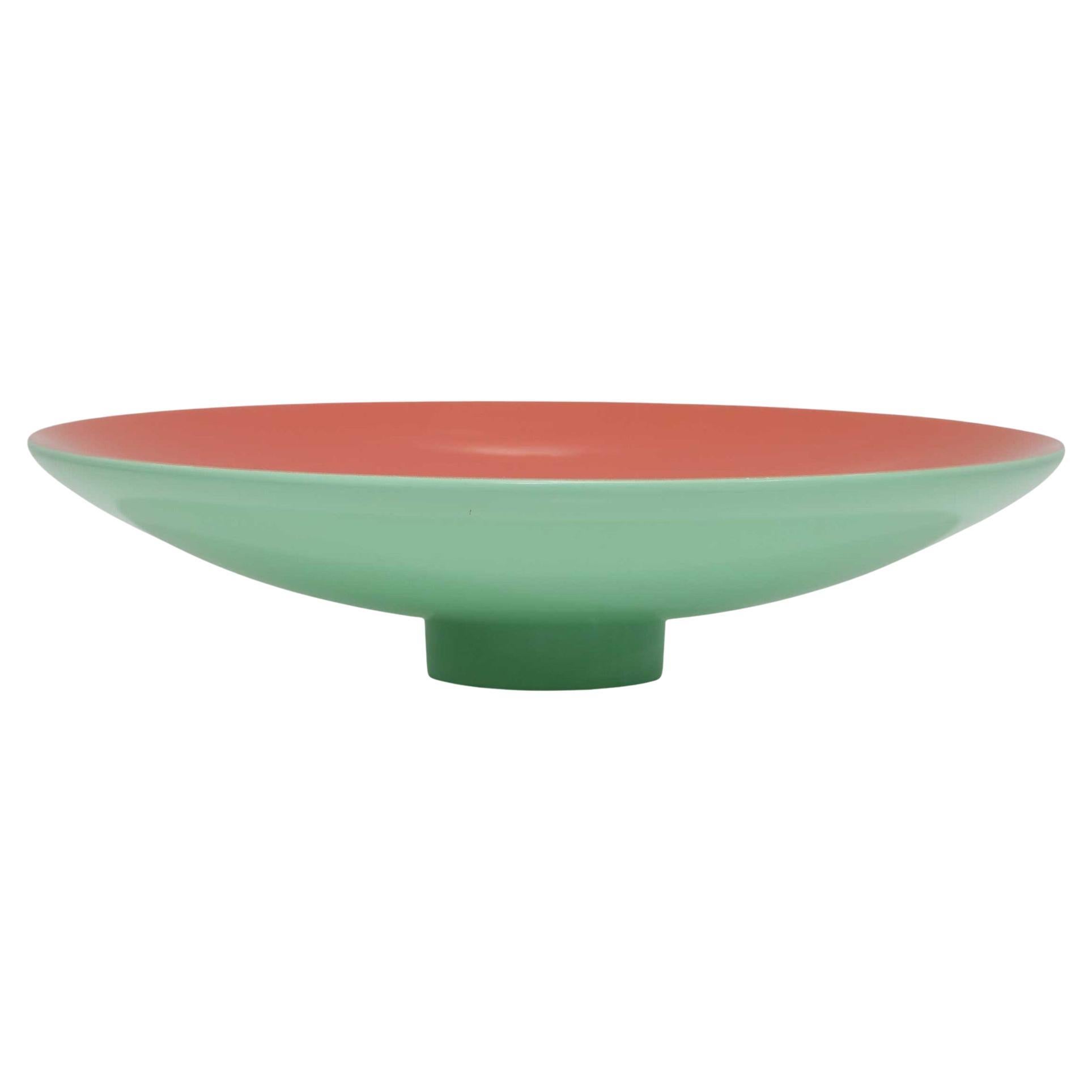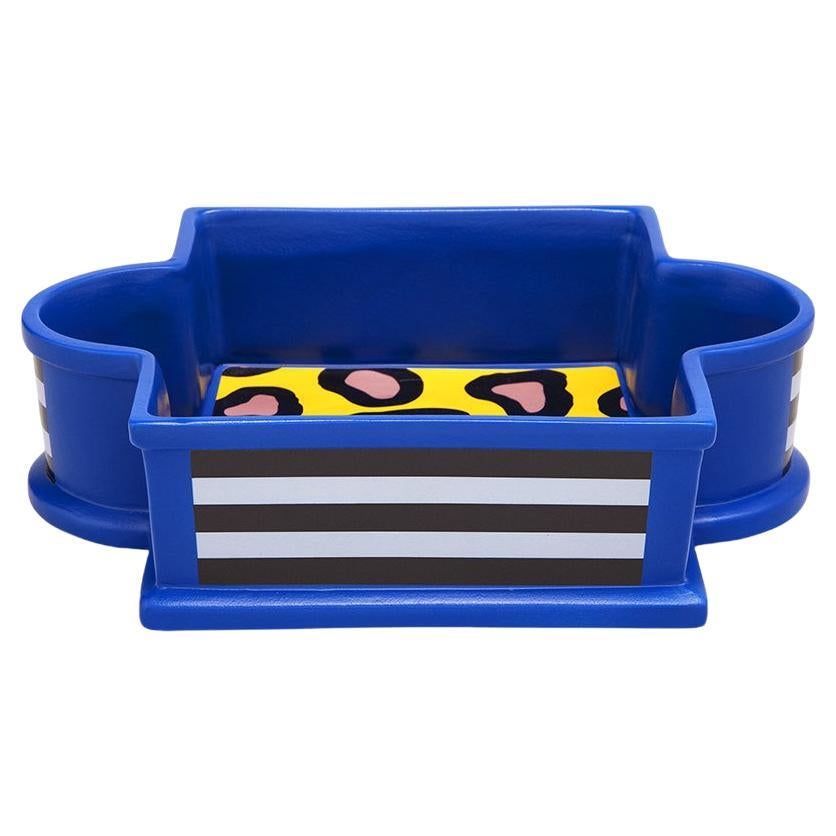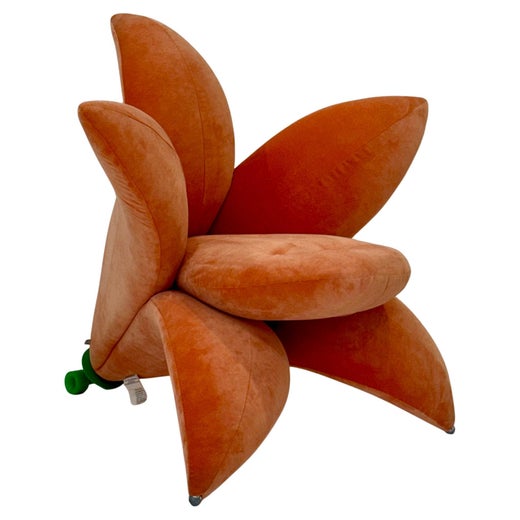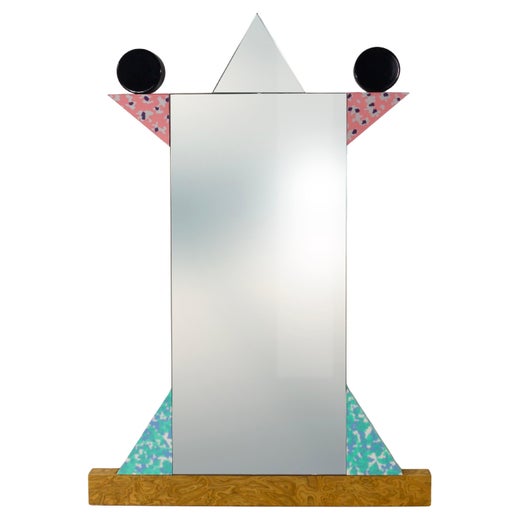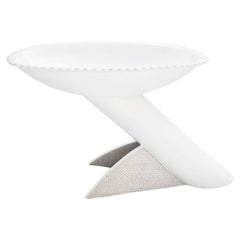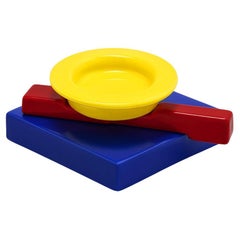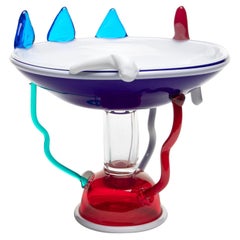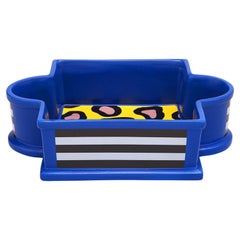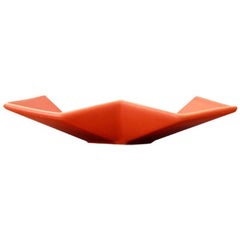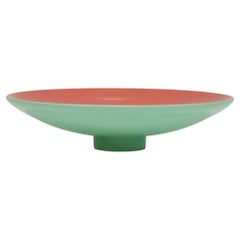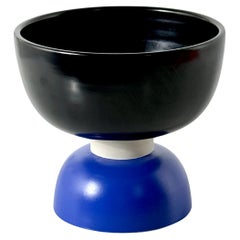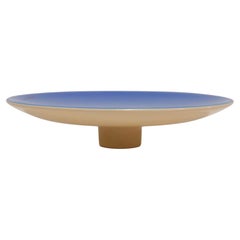Parana Ceramic Fruit Bowl, by Masanori Umeda from Memphis Milano
About the Item
- Creator:
- Dimensions:Height: 3.55 in (9 cm)Width: 15.75 in (40 cm)Depth: 14.57 in (37 cm)
- Style:Modern (In the Style Of)
- Materials and Techniques:
- Place of Origin:
- Period:
- Date of Manufacture:Contemporary
- Production Type:New & Custom(Current Production)
- Estimated Production Time:8-9 weeks
- Condition:
- Seller Location:La Morra, IT
- Reference Number:Seller: 486830331stDibs: LU4830117350802
Masanori Umeda
From his cheerful Getsuen Lily chair to his provocative Ginza robot cabinet, Masanori Umeda’s furniture designs are often described by critics and collectors alike as poetic, ironic and full of whimsy.
Umeda was born in 1941 in Kanagawa, graduating from Tokyo’s Kuwasawa Design School in 1962. In 1967, he moved to Milan, Italy, where he began his design career working in the studio of Achille and Pier Giacomo Castiglioni. From 1970 to 1979, Umeda was a design consultant for the Olivetti studio, and there he met prolific furniture designer and architect Ettore Sottsass, who founded the Memphis Group, Italy's boldest, brashest postmodern design movement.
In the early 1980s, Umeda joined Memphis, creating his most famous piece, the Tawayara boxing ring seating unit in 1981. Comprising a monochrome, Tatami matte floor, tie-dyed cushions, bungee-style ropes and flexible lighting at each of the four corners, the Tawayara was Umeda’s homage to space-constrained Japanese living areas. It remains one of Umeda’s rarest pieces (only 30 were ever made). Fashion designer and icon Karl Lagerfeld once owned a Tawayara boxing ring that featured prominently in his Monaco apartment.
In 1986, Umeda returned to Japan and opened his U-MetaDesign Studio (now Umeda Design Studio Inc.) in Tokyo, garnering accolades for his uniquely lighthearted collection of armchairs, lounge chairs, table lamps and decorative objects.
Over the course of his career, Umeda has won several awards, including the BraunPrize in 1968, the Grand Prix of Japan Display Design Award in 1981, the Japan Commercial Space Design Award in 1984 and the Grand Prix of Good Design Award in 1990.
Umeda continues to design furnishings that embody the spirit of postmodernism, enjoying collaborations with Memphis Milano and Italian furniture manufacturer Edra. His pieces have been exhibited internationally and are held in the collections of museums around the world, including the M+ Museum in Hong Kong, which acquired more than 180 of his works in 2015.
On 1stDibs, find a range of vintage Masanori Umeda seating, lighting and serveware.
Memphis Milano
To many people, postmodern design is synonymous with the Memphis Group. This Italian collaborative created the most radical and attention-getting designs of the period, upending most of the accepted standards of how furniture should look. Today, the Memphis Milano brand, which is managed by Alberto Bianchi Albrici, still produces designs created by the group between 1981 and 1988.
The Memphis story begins in 1980, when Ettore Sottsass, then a beacon of Italian postmodernism, tapped a coterie of younger designers to develop a collection for the Milan Furniture Fair the next year, determined that all the new furniture they were then seeing was boring. Their mission: Boldly reject the stark minimalism of the 1970s and shatter the rules of form and function. (Sottsass’s Ultrafragola mirror, designed in 1970, embodied many of what would become the collective’s postmodern ideals.)
The group decided to design, produce and market their own collection, one that wouldn’t be restricted by concerns like functionality and so-called good taste. Its debut, at Milan’s 1981 Salone del Mobile, drew thousands of viewers and caused a major stir in design circles.
So as a record of Bob Dylan’s “Stuck Inside of Mobile” played on repeat, they took their name from the song, devised their marketing strategy and plotted the postmodern look that would come to define the decade of excess — primary colors, blown-up proportions, playful nods to Art Deco and Pop art. A high-low mix of materials also helped define Memphis, as evidenced by Javier Mariscal’s pastel serving trays, which feature laminate veneer — a material previously used only in kitchens — as well as Shiro Kuramata’s Nara and Kyoto tables made from colored glass-infused terrazzo.
An image of Sottsass posing with his collaborators in a conversation pit shaped like a boxing ring appeared in magazines all over the world, and Karl Lagerfield furnished his Monte Carlo penthouse entirely in Memphis furniture. Meanwhile, members like Andrea Branzi, Aldo Cibic, Michele de Lucchi, Nathalie du Pasquier, Kuramata, Paola Navone, Peter Shire, George Sowden, Sottsass and his wife, journalist Barbara Radice, went on to enjoy fruitful careers.
Some people think of the Milan-based collective as the design equivalent to Patrick Nagel’s kitschy screenprints, but for others Memphis represents what made the early 1980s so great: freedom of expression, dizzying patterns and off-the-wall colors.
Eventually, the Reagan era gave way to cool 1990s minimalism, and Memphis fell out of fashion. Sottsass left the group in 1985, and by 1987, it had disbanded. Yet decades later, Memphis is back and can be traced to today’s most exciting designers.
“As someone who was born in the 1980s, Memphis at times feels like the grown-up, artsy version of the toys I used to play with,” says Shaun Kasperbauer, cofounder of the Brooklyn studio Souda. “It feels a little nostalgic, but at the same time it seems like an aesthetic that’s perfectly suited to an internet age — loud, colorful and utilizing forms that are graphic and often a little unexpected.”
Find a collection of Memphis Milano seating, tables, decorative objects and other furniture on 1stDibs.
- ShippingRetrieving quote...Shipping from: La Morra, Italy
- Return Policy
More From This Seller
View All21st Century and Contemporary Italian Modern Serving Bowls
Porcelain
21st Century and Contemporary Italian Modern Ashtrays
Ceramic
21st Century and Contemporary Italian Modern Decorative Bowls
Glass
2010s Decorative Bowls
Ceramic
21st Century and Contemporary Italian Modern Serving Bowls
Ceramic
21st Century and Contemporary Italian Modern Vases
Ceramic
You May Also Like
20th Century German Minimalist Decorative Bowls
Ceramic
20th Century Italian Modern Decorative Bowls
Plastic
Late 20th Century Italian Post-Modern Ceramics
Ceramic
20th Century Italian Modern Decorative Bowls
Plastic
2010s German Post-Modern Ceramics
Ceramic
20th Century Italian Mid-Century Modern Decorative Bowls
Glass
